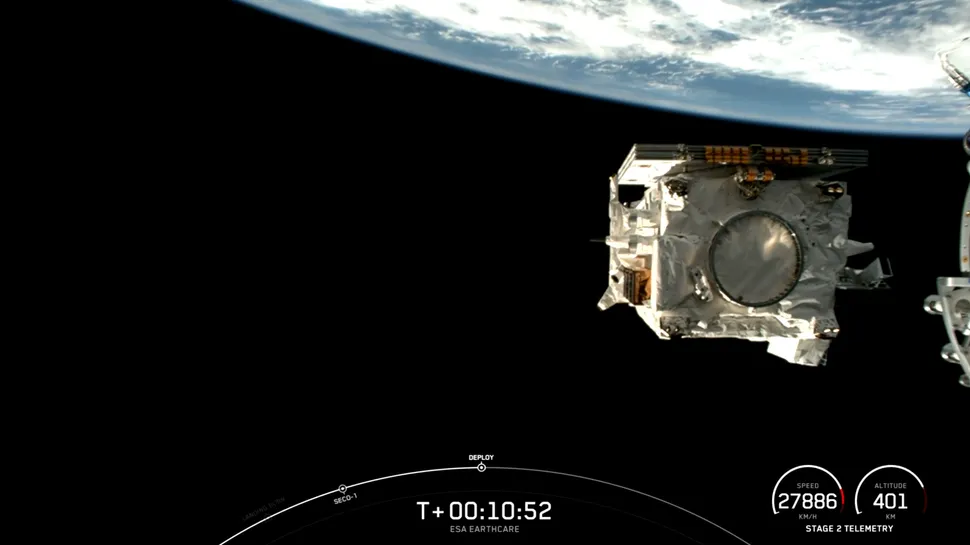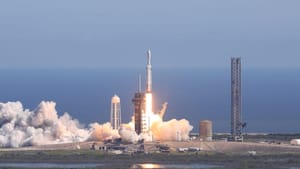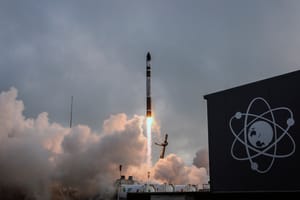
May 31, 2024
A gift to future generations: EarthCARE
A new Earth-observation mission has lifted off and into orbit. A Falcon 9 carrier rocket lifted the Earth Cloud Aerosol and Radiation Explorer satellite into orbit from Vandenberg Space Force base. This payload, known as EarthCARE, is a European-Japanese cooperative mission meant to examine the role that clouds and aerosols play in reflecting solar radiation into space. Gaining a deeper understanding of the dynamics at play with solar radiation emitted and absorbed by our planet is crucial for addressing climate issues.

EarthCARE will also measure the distribution of water droplets and ice crystals in the clouds above our planet to imrpove the accuracy of cloud development, and weather models. These improve weather prediction that can greatly benefit humanity. It is incremental missions like this that build upon our understanding of our own planet that makes space so viable to future generations.
Its primary mission while only expected to last three years is an important step in caring for our planet. The mission aims to deliver a detailed depiction of the three-dimensional spatial and temporal structure of the radiative flux field at the top of the atmosphere, within the atmosphere, and at the Earth's surface. Utilizing advanced lidar and radar technology along with the synergistic integration of various remote sensing techniques onboard EarthCARE, the mission will generate unprecedented datasets. These datasets will enable scientists to study the relationships between clouds, aerosols, and radiation with unprecedented accuracy, significantly enhancing our understanding of these highly variable parameters. This information will be crucial for improving weather forecasts and future climate predictions.
Its instruments include but are not limited to,
Atmospheric LIDar (ATLID) - Developed by ESA and Airbus Space Toulouse, this instrument operates at 354.8 nm and uses high-spectral resolution and depolarization techniques to measure aerosols in the atmosphere.
Cloud Profiling Radar (CPR) - Developed by JAXA and NICT, this radar has a sensitivity of 36 dBZ and provides data with a 500 m horizontal and 100 m vertical sampling resolution. It operates at 94.05 GHz and has Doppler capability to profile cloud structures and movements. Using its capability it provides vertical profiles measurements of clouds and observes vertical velocities of cloud particles
Multi-Spectral Imager (MSI) - Developed by ESA, this imager features 7 spectral channels, covers a 150 km swath, and has a 500 m pixel resolution. It is used to capture data on clouds and aerosols.
Broad-Band Radiometer (BBR) - Developed by ESA, this radiometer has 2 channels and provides 3 viewing angles (nadir, fore, and aft). It measures radiative fluxes to study radiation at the top of the atmosphere, within the atmosphere, and at the Earth's surface.
This is the largest and most complex Earth Explorer to date, and is a valuable tool for scientists in years to come. Ultimately this is what spaceflight is about, improving the quality of life and deepening our understanding of not just the universe but this pale blue dot we call home.
This mission is a long time in the making, first being thought up in the early 2000s. This latest workshop had discussions on training machine learning algorithms on EarthCARE's datasets! This data can also be used with similar observation satellites such as CALIPSO/CloudSat and future ones. Besides the many expected technical applications of the mission it was a great opportunity to foster international collaboration with JAXA. In this new age, to truly give the gift of space to future generations we have to not only look after our planet but learn how to deepen collaboration with other agencies and peoples.
What is often overlooked as just another science mission may not be landing on the moon, but in many ways, it is just as exciting.



